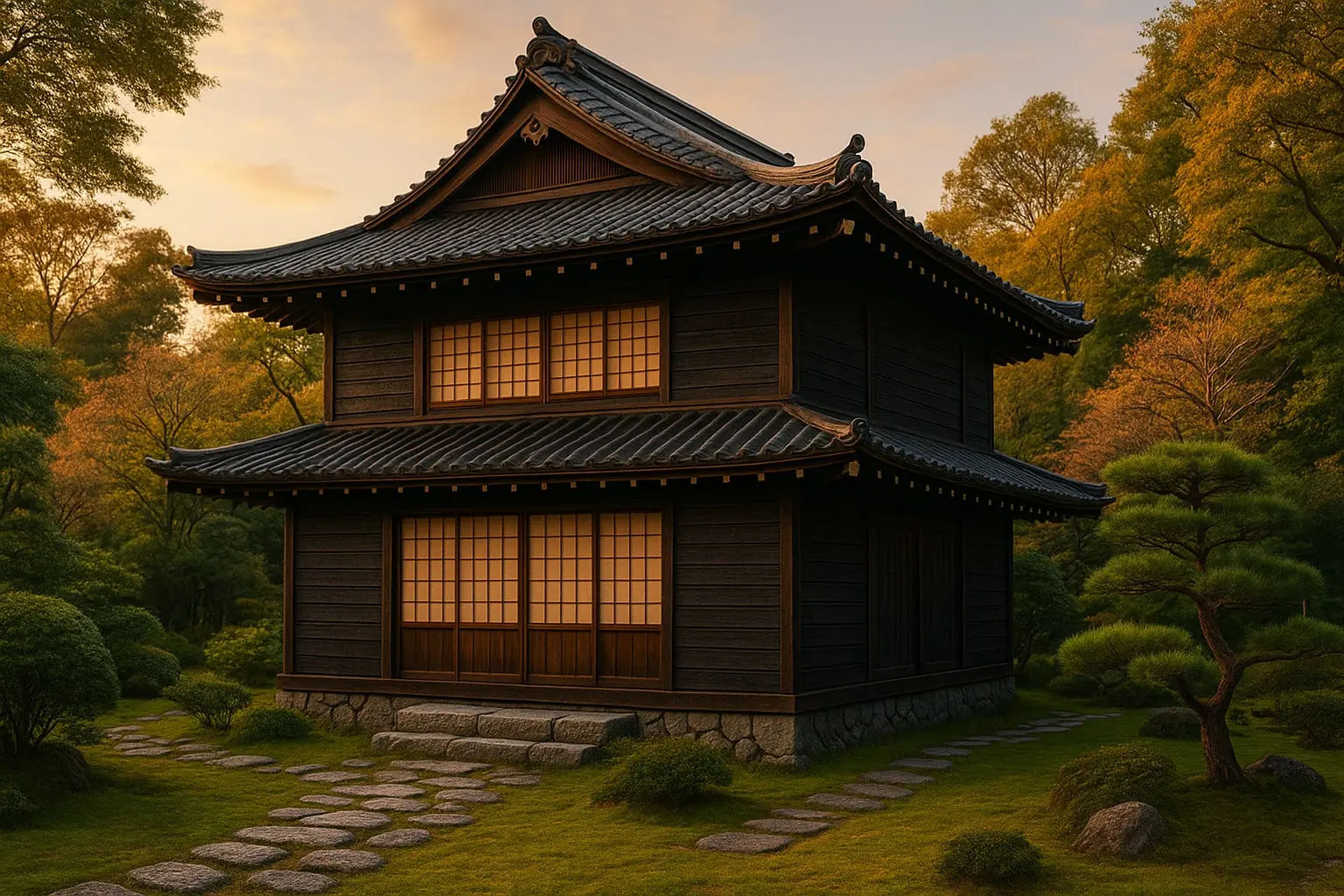
The Shou Sugi Ban technique is a traditional Japanese method of wood charring (also known as Yakisugi), which originated in the 17th–18th century during the Edo period. The surface of the wood is intentionally burned with flame, then the carbonized layer is brushed off and the wood is treated with natural oil. This process gives the wood exceptional durability, resistance, a distinctive aesthetic appearance, and natural protection against pests.
Even if you haven’t heard the name before, you’ve likely seen Yakisugi cladding. In the Western world, this ancient Japanese technique is known as Shou Sugi Ban — a loosely translated term meaning “burnt cedar.”
This wood-treatment method emerged in Japan around the 17th–18th century, when it was discovered that charring the surface of wood naturally protects it from:
insects and rot,
fire (ironically, the charred layer ignites more slowly),
moisture and UV rays.
Traditionally, the technique used Japanese cedar (sugi), but today it is successfully applied to other species as well — including spruce, pine, and larch.
For more information, please refer to the Wikipedia article on Yakisugi.
*However, it is important to note that surface charring alone does not always provide consistent protection against rot or ignition — scientific studies confirm that the effect can vary significantly depending on the wood species and specific charring parameters. Sources: ResearchGate, PubMed.
You can find more information about the benefits of charred wood here.
Facades: An attractive and long-lasting exterior finish with minimal maintenance.
Terrace boards: Withstand harsh weather conditions and are naturally resistant to insects.
Fences, outdoor decor: An excellent choice for various outdoor applications.
Interior design: Wall cladding, furniture accents — a warm, unique, and visually striking wood pattern.
If you are interested in the Shou Sugi Ban technique and want to apply it in your project, we are ready to help bring your ideas to life. Contact us to receive a professional proposal today.
Is this technique suitable for the climate in Europe?
Yes. Properly treated charred wood performs exceptionally well in our climate — it is resistant to moisture, cold, mold, and insects.
How long does charred wood last?
When maintained correctly, charred wood is highly durable. Under normal conditions and with regular oiling (façade boards every 5–8 years, terrace boards every 1–2 years), our products can retain their quality and appearance for decades.
Does Shou Sugi Ban wood require maintenance?
Yes, but very little. Periodic oiling is enough to maintain the color and preserve the longevity of the surface.
What is the price of charred wood?
You can quickly and accurately check the price of charred wood here.
Charred façade boards (per m²):
Spruce or pine: €17.50 (+VAT) to €26 (+VAT)
Larch: €28 (+VAT) to €44.50 (+VAT)
Charred terrace boards (per m²):
Spruce or pine: €22 (+VAT) to €32 (+VAT)
Larch: €40 (+VAT) to €44 (+VAT)
Charred fence boards (per m²):
Spruce or pine: €20 (+VAT) to €30 (+VAT)
Larch: €40 (+VAT) to €44.50 (+VAT)
Charred battens / slats (per linear meter):
Spruce or pine: €2.90 (+VAT) to €15.00 (+VAT)
Larch: €6 (+VAT) to €40.00 (+VAT)
Pricing varies depending on the order quantity, wood dimensions, and the chosen shade.
For an exact quote, feel free to contact us.
Discounts are applied to the pine assortment! Take advantage of this temporary offer and get wood for up to 24% cheaper! We will send the special price list by email.